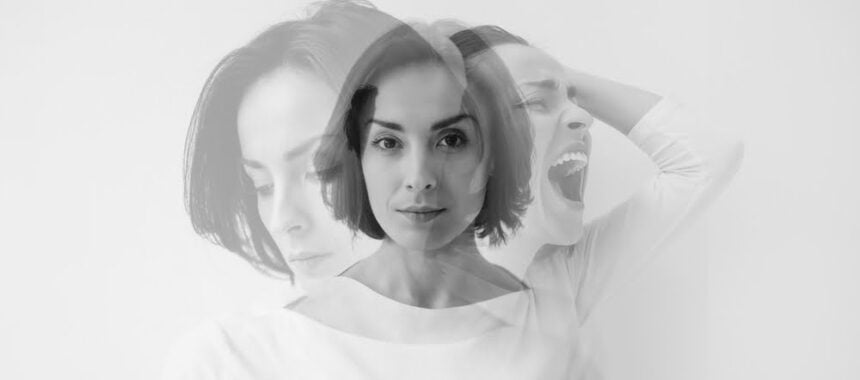Bipolar disorder is a serious psychiatric disorder that affects an estimated 2.3 million Americans. However, many people don’t understand it very well.
You may be familiar with the phrase “bipolar disorder,” but you may have never connected it to the actions and substance abuse of a loved one. The first step toward getting your loved one the specialist assistance they need is asking yourself, “What is bipolar disorder?” and taking the time to understand how the disease affects them. Learn about the signs and symptoms of bipolar disorder, how to identify it, and what to do if the person you’re caring for has a history of substance abuse as we go deeper into this mental health condition.
Medication and therapy are often used together in the treatment process. Substance abuse problems may be a result of bipolar disorder left untreated. If a person is struggling with addiction and another mental health condition, they should seek treatment for a dual diagnosis.
What is bipolar disorder?
The mental health condition known as bipolar disorder is characterized by manic and depressive phases. Most people will refer to them as “peaks” and “valleys.” Bipolar disorder was previously known as manic depression. Although genetics have a role, environmental and behavioral factors also contribute to its development and manifestation.
When a person has bipolar disorder, it can significantly hinder their day-to-day functioning. A person’s ability to eat, think positively about themselves, and perform their job can all be negatively impacted by depressive episodes. They may feel more energized, sleep less, and be more confident than usual during a manic episode.
Hallucinations are a possible sign of active bipolar illness in untreated patients. They risk developing hallucinations. During a manic or depressive episode, paranoia is a possible symptom.
What is Addiction in Bipolar Disorder?
Untreated bipolar disorder increases the risk that a person would abuse substances like alcohol or drugs to deal with the stresses of each episode. If someone is experiencing mania, they may turn to alcohol to help them relax. They may seek “uppers” to help them feel more sociable or give them the energy to get things done while experiencing a depressive episode.
An untreated mental health illness might lead to regular use of alcohol, prescribed medication, or illegal drugs as a coping mechanism. The probability of becoming addicted to a drug rises with each successive use. The risk also increases as more medicine is used.
When a person with bipolar disorder struggles with substance abuse, their entire life is affected. They can start associating only with drug suppliers. They could withdraw from their social circle. Their incapacity to work could cost them their job and make future employment challenging.
How Frequently Does Bipolar Disorder Occur?
Bipolar disorder affects between 1% and 2% of the population. That’s less than 2% of the general populace. To be clear, bipolar disorder is not caused by things like stressful familial dynamics. However, environmental circumstances may amplify the occurrences.
Symptoms and Indicators
Your loved one may have unusually high energy levels during a manic episode. They could be noticeably more chatty than usual. A person who is shy or reserved may appear to be “the life of the party.”
A person suffering from mania could speak more rapidly than usual and try to cover a lot of ground in a short amount of time. Probably, their mind is going a million miles an hour. They may have an inflated sense of their abilities and believe they can accomplish more than is reasonable in a given period of time.
Manic episodes are associated with a decrease in appetite. And they might not need as much sleep. The poor judgment could have obvious consequences. It can manifest as excessive eating and drinking or the gratuitous disposal of valuables.
You may be able to recognize the beginnings of a depressive episode. Your family member may begin to eat more and gain weight. It’s possible that they’ll sleep for much longer than usual or that they’ll have problems falling asleep.
When someone is depressed, they may seem unable to complete even the most basic of chores. It could be more challenging to focus and make judgments. If your loved one’s employer sees these concerns, it could lead to trouble. During a depressed episode, your loved one may stutter or forget what they say. They may show signs of boredom or indifference in their usual pastimes. They might even say they feel hopeless or unworthy.
Therapeutic Methods for Bipolar Disorder
Treatment options for bipolar illness are multifaceted. The goal of individual therapy for such disorders is to help the client work through their symptoms and develop the coping mechanisms necessary to make positive decisions regardless of the intensity of their mood. One of the main benefits of group therapy is the opportunity to tell one’s story in a safe and accepting environment with others who can relate. Patients with bipolar disorder can benefit from cognitive-behavioral therapy (CBT) by learning to recognize negative patterns of thought and behavior and relearning how to replace them with more effective coping methods.
An additional treatment option for someone with bipolar disorder is family therapy. A patient’s loved ones can visit with them in a secure and controlled environment to share their stories and offer advice on how to mend broken ties. Since everyone in the family will have the same understanding of what bipolar disorder is, finding new ways to express needs to one another will usually pave the road to healing for the whole unit.
The diagnostic process for bipolar disorder
Psychological testing is used to diagnose bipolar illness by gauging the severity and duration of symptoms. Bipolar disorder has a wide range of symptoms, and it’s crucial to identify each subtype in order to administer effective treatment. Bipolar I Disorder, Bipolar II Disorder, and Cyclothymic Disorder are the three classifications.
Manic episodes in those with Bipolar I Disorder typically linger for a week or longer. There’s also a chance that their symptoms will be so severe that they’ll need emergency care immediately. There’s a chance that this will require medical attention in a hospital. Their bouts of depression last for a minimum of two weeks. They could also have simultaneous manic and depressed episodes.
In terms of mental illness, those with Bipolar II Disorder are considered to have a less severe case. It’s possible that someone with Bipolar I would recognize this rhythm of depression and euphoria. Their episodes are milder than average.
The third type, Cyclothymia, is characterized by hypomanic and depressive episodes that continue for two years or more in adulthood. Adolescents have only a single year to complete the program. Bipolar Disorder I and Bipolar Disorder II require more severe episodes than these people have experienced.










